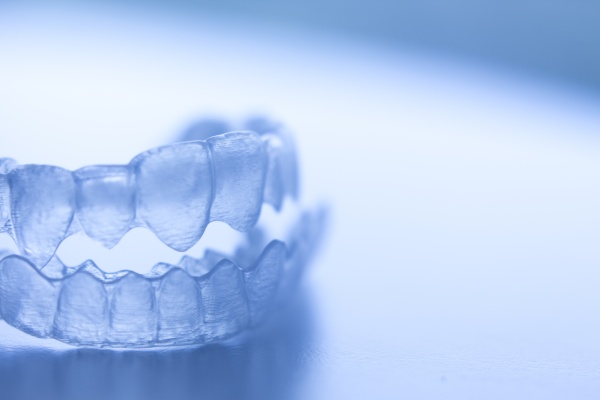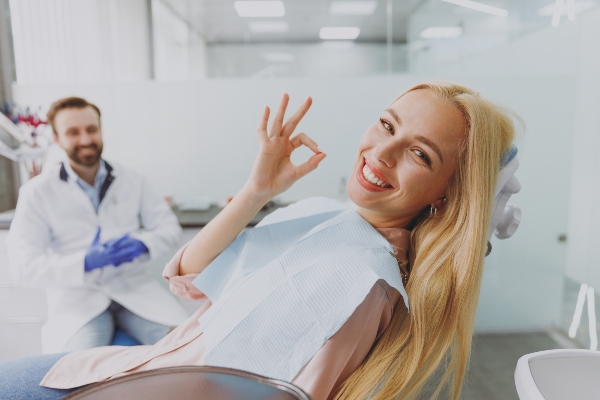Food and Beverage Restrictions When Wearing Invisalign Aligners

Invisalign® aligners are designed to help straighten teeth without the hassle, restriction and expense of traditional braces. One of the benefits of choosing this system is the freedom to eat and drink as normal without making any major dietary changes since there are no prohibited foods or beverages. However, it is critical to follow recommended procedures for eating and drinking, and it may also be beneficial to make some changes to prevent unnecessary discomfort. Making safe and healthy choices can help prevent unnecessary damage to teeth and aligners by steering clear of potentially harmful foods and beverages. The end result may be a straighter smile that is also healthier and stronger than before.
Eating and drinking while using Invisalign®
Invisalign® wearers may be surprised by the lack of required dietary changes compared to those needed when wearing traditional braces. It is important to learn how to approach meal and snack time when using the clear aligners by understanding when it is best to remove them and when it is acceptable to leave them in place. Before meals, snacks or coffee breaks, the aligners should be removed and stored in a safe location. This allows the wearer to enjoy all of their favorite foods and beverages without the risk of damage to the equipment. Teeth should be thoroughly brushed before replacing the aligners to prevent excess decay, irritation and discoloration or stains from prolonged contact with food. Aligners should never be worn when eating or drinking unless the wearer is only consuming clean, pure water.
Food and beverage choices
While there are no restrictions once aligners have been removed, it may be helpful to make a few changes to get the best experience while using aligner trays.
Options to avoid
While it is a more discreet option, Invisalign® is still a dental procedure that causes the teeth to shift and change over time, which may lead to increased sensitivity. It may be best to avoid extremely hot or cold items during treatment, as well as tough, sticky or very crunchy foods. Since aligners should be worn at least 22 hours a day, gum-chewing may no longer be a practical decision.
Options to embrace
Choosing a diet rich in nutritious foods supplemented with plenty of water may help strengthen teeth and gums for a healthier smile during the alignment process. Several foods and drinks have nutritious benefits that are excellent choices for Invisalign® users both during and after treatment. According to the American Dental Association®, the following options are good choices for improved oral health:
- Dairy foods rich in protein and calcium
- Tap water infused with fluoride
- Fruits and vegetables high in fiber for natural teeth cleaning
Conclusion
While Invisalign® users are free to enjoy any food or beverage of their choice, it is important to follow wear and care guidelines for best results. In addition, certain options may cause unwanted irritation while others may help improve teeth and gums.
Are you considering Invisalign® in the New York area? Get more information at https://www.newyorkdentaloffice.com.
Check out what others are saying about our services on Yelp: Read our Yelp reviews.
Recent Posts
If you have ever felt self-conscious about your teeth and considered seeing a cosmetic dentist, you are not alone. Americans spend thousands of dollars trying to enhance their smiles each year. However, for a truly transformative look that is also safe for your teeth, it is recommended that you see a cosmetic dentist.A cosmetic dentist…
Your dentist can provide a dental restoration that can restore your damaged tooth. A broken tooth can cause pain and discomfort. It can prevent you from eating, smiling, and speaking. Knowing what restorations are available can help you decide which one suits you the most. Here are the details about each dental restoration that can…
A dental restoration can stop the progress of dental problems from decay or injury. Dental fillings can treat mild to moderate cavities. Your dentist will assess your teeth and see how many need fillings. Here are the things to expect before you get this dental restoration.The dentist will examine the patient’s teeth and see how…
Dental restorations procedures repair damaged or decayed teeth and improve their appearance. Multiple restoration procedures are available today, each with unique benefits and drawbacks. The following article presents the various options for dental restoration procedures and which may be the most effective treatment option for you and your smile.Dental fillings are the most common type…



